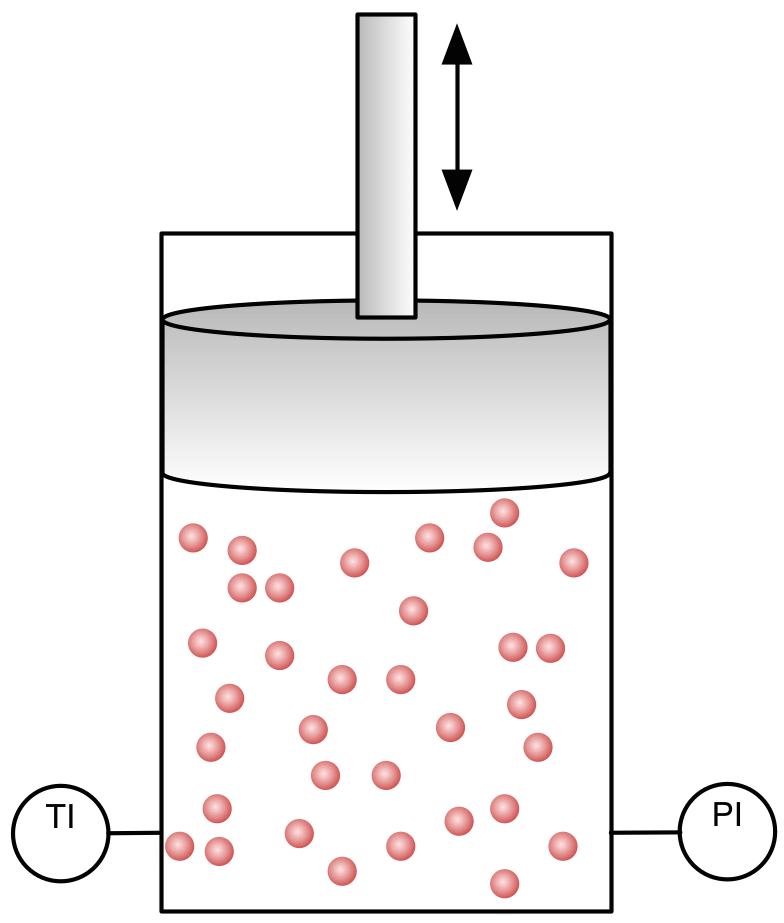Ideal Gas Equation
Scientists have observed that expansion properties of gases are much more uniform than that of liquids. The difference in this property of liquids and gases is of prime importance in thermometers.
- It has been observed that liquid-in-glass thermometers show different readings for the same temperatures. That’s because of the differing expansion properties of various liquids.
- On the other hand, gas thermometers show same readings for the same temperatures, regardless of the gas contained in them. That’s because all gases exhibit the same expansion behaviour (at low densities).
 Table of Contents
Table of Contents- Variables affecting the behaviour of Gas
- Gas Laws
Variables affecting the behaviour of Gas
The variables that affect the behaviour of a given quantity (or mass) of gas are:
- Pressure (P)
- Volume (V)
- Temperature (T): T is the absolute temperature. T = t + 273.15 (where t is the temperature in °C).
Gas Laws
Now, let’s have a look at the various Gas Laws, and Ideal Gas Equation.
Boyle’s law
This law was discovered by an English Chemist Robert Boyle. As per this law:
If (absolute) temperature (T) is constant, the pressure (P) and volume (V) of a given quantity of gas are inversely related.
So, PV = Constant
Charles’ law
This law was discovered by a French scientist Jacques Charles. As per this law:
If pressure (P) is constant, the volume (V) of a given quantity of gas is directly related to absolute temperature (T).
So, V/T = Constant
Ideal Gas law and Ideal Gas Equation
If we combine Boyle’s law and Charles’ law, we get Ideal Gas law. That is, we can combine the above two equations to place all the three variables in a single equation. For a given quantity of gas:
PV/T = Constant (This is Ideal Gas law)
Now, what if we want to generalize the above law to any quantity of any dilute gas?
Then we get the Ideal Gas Equation, PV = μRT
where, μ is the number of moles in the sample of gas, and
R is called universal gas constant. The value of R = 8.31 J mol-1 K-1
 Note
NoteKindly note that these laws hold true only for low density gases.
